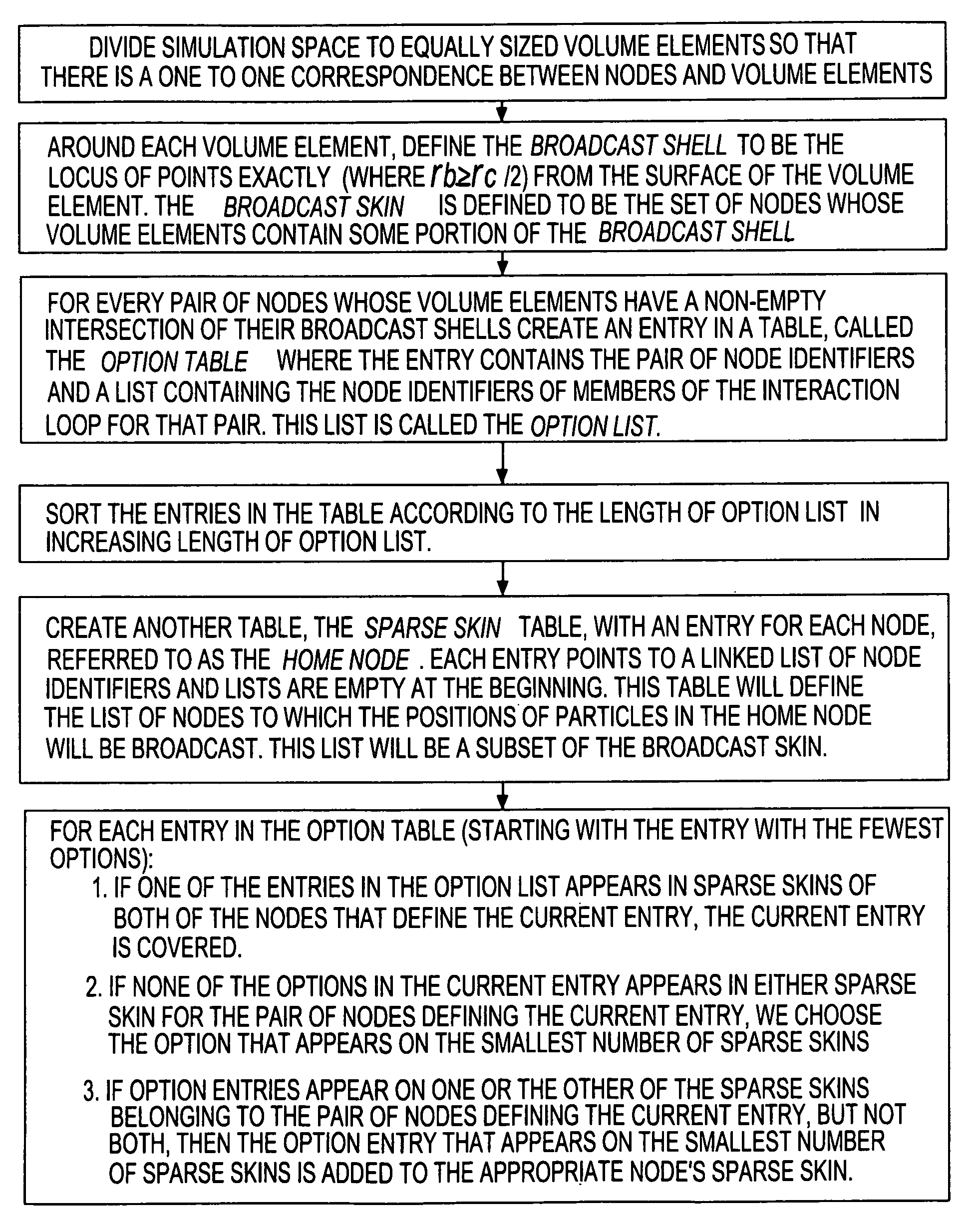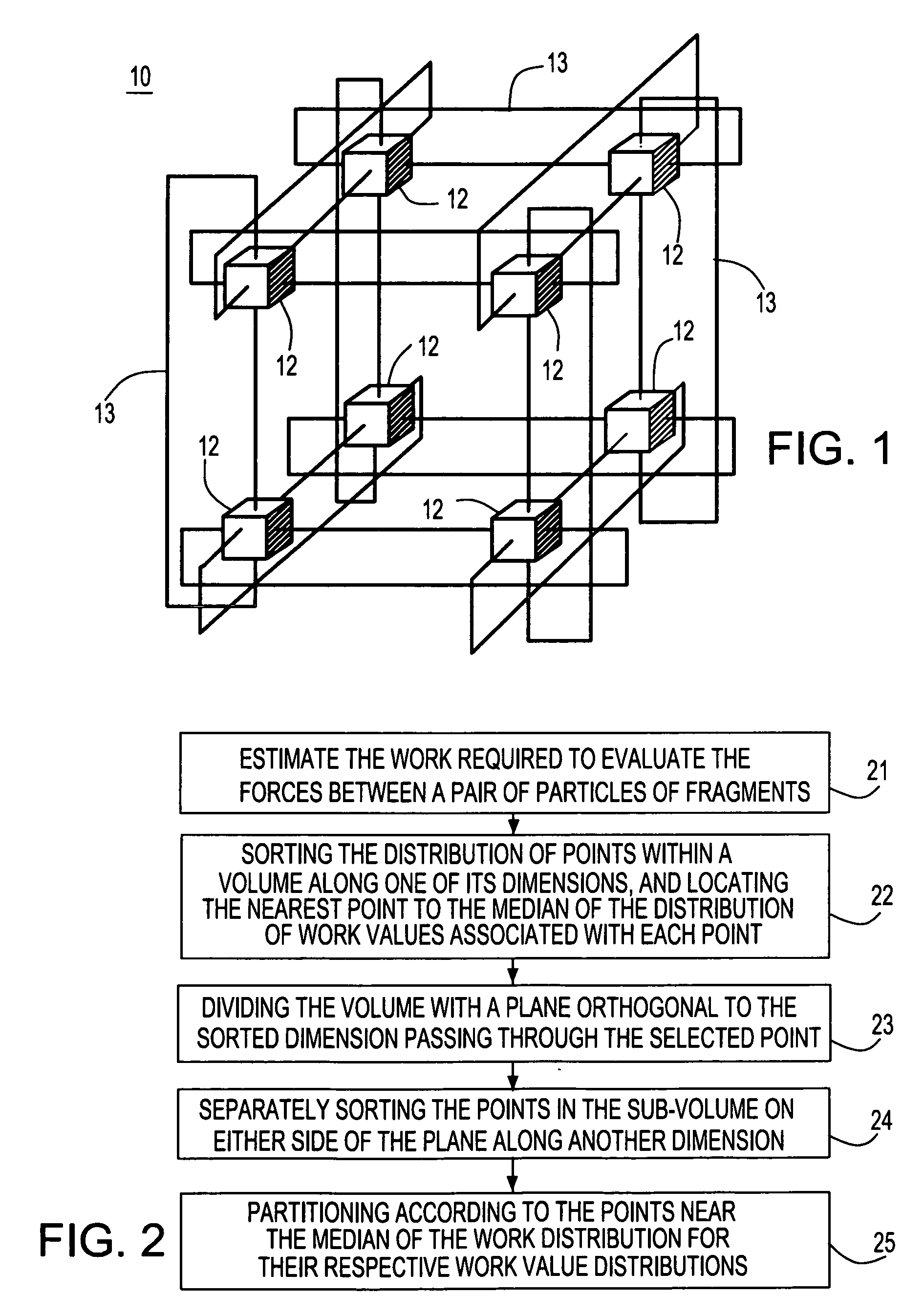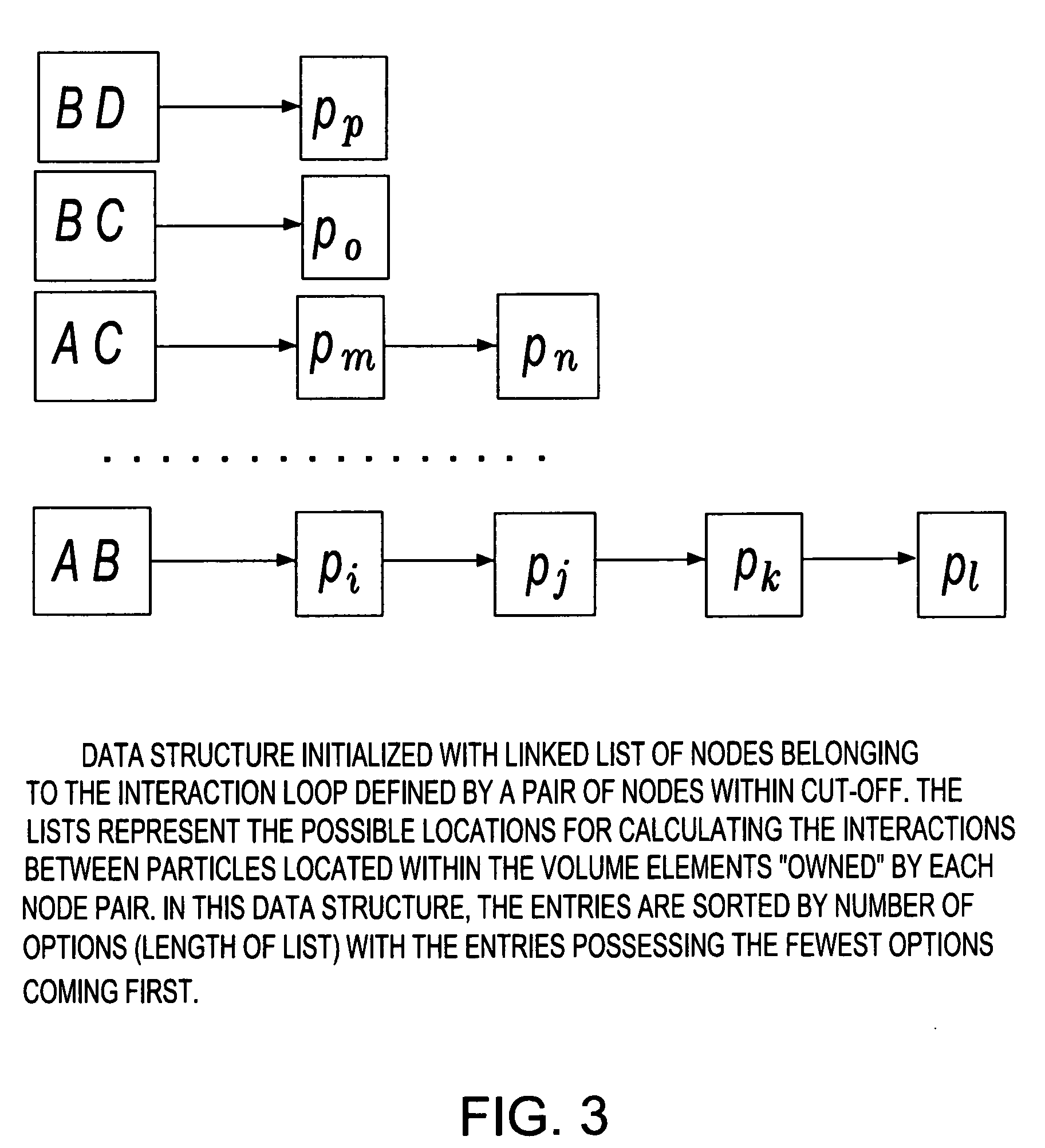Reduced message count for interaction decomposition of N-body simulations
a simulation and message count technology, applied in the field of reducing the message count for the interaction decomposition of n-body simulations, can solve the problem of large computational burden due to particle pair interactions, and achieve the effect of favorable communication characteristics and efficient mapping
- Summary
- Abstract
- Description
- Claims
- Application Information
AI Technical Summary
Benefits of technology
Problems solved by technology
Method used
Image
Examples
Embodiment Construction
[0031]FIG. 1 illustrates a part of a computer system or structure that may be used in the implementation of the present invention. More specifically, FIG. 1 shows a part of a Massively Parallel Supercomputer architecture in the form of a three-dimensional torus designed to deliver processing power on the order of teraOPS (trillion floating-point operations per second) for a wide range of applications. The Massively Parallel supercomputer architecture, in an exemplary embodiment, may comprise 65,536 processing nodes organized as a 64×32×32 three-dimensional torus with each processing node connected to six (6) neighboring nodes.
[0032]In particular, FIG. 1 shows a torus comprised of eight nodes 12 connected together by links or connections 13. It is clear to see how this interconnect scales by increasing the number of nodes 12 along all three dimensions. With current technology, this architecture can be leveraged to hundreds of teraOPS. As will be understood by those of ordinary skill ...
PUM
 Login to View More
Login to View More Abstract
Description
Claims
Application Information
 Login to View More
Login to View More - R&D
- Intellectual Property
- Life Sciences
- Materials
- Tech Scout
- Unparalleled Data Quality
- Higher Quality Content
- 60% Fewer Hallucinations
Browse by: Latest US Patents, China's latest patents, Technical Efficacy Thesaurus, Application Domain, Technology Topic, Popular Technical Reports.
© 2025 PatSnap. All rights reserved.Legal|Privacy policy|Modern Slavery Act Transparency Statement|Sitemap|About US| Contact US: help@patsnap.com



